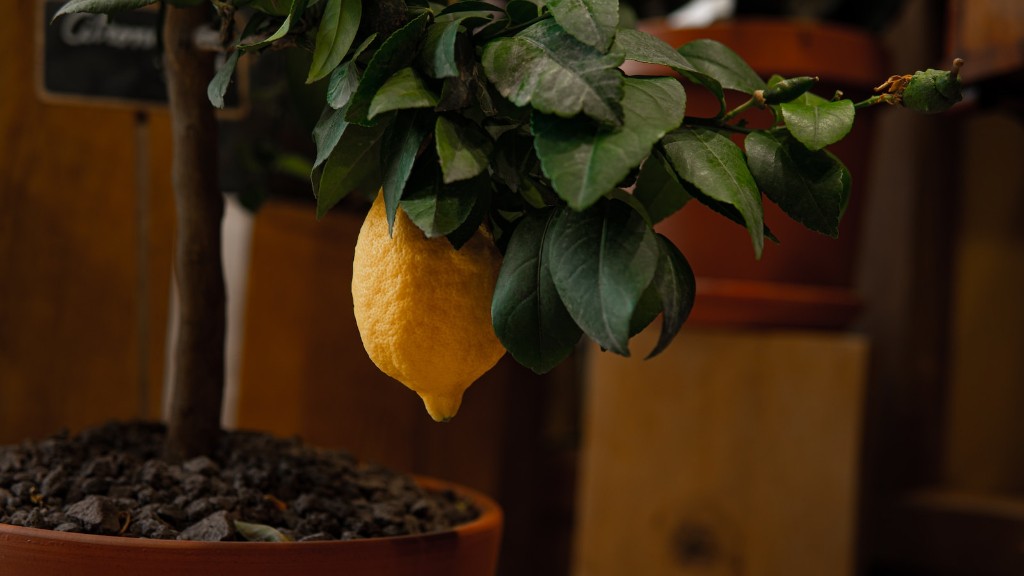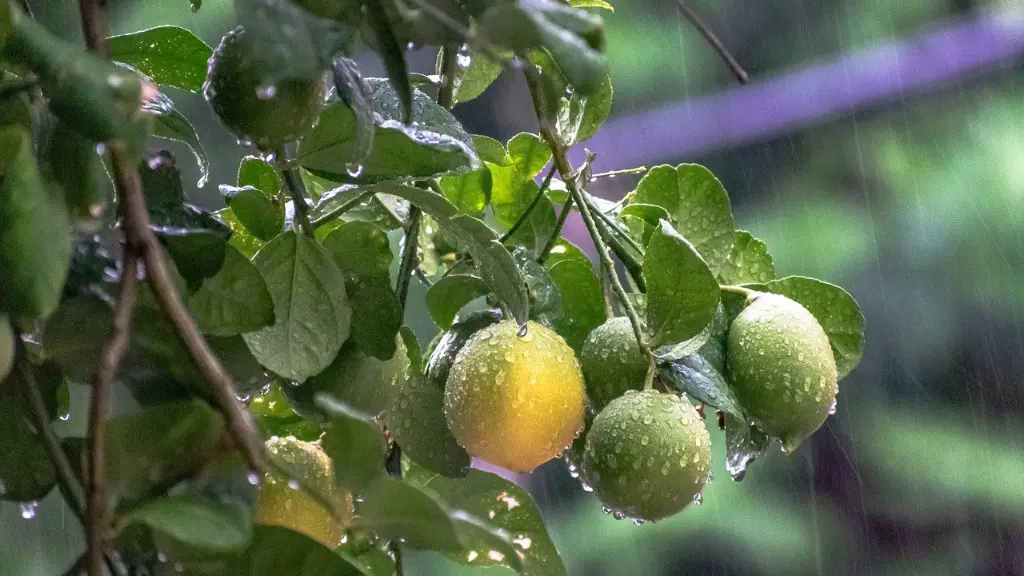It is possible to shape a lemon tree to help it grow with a pleasing shape, while providing an inviting environment for fruit production. In this article, I will give an overview of the various methods on how to shape a lemon tree. First, one must start by selecting the desired shape. The most popular shapes are round and vase-like shapes, but free-form shapes are also great. Then, one must decide on where to make the pruning cuts. Pruning of the lemon tree should begin when it is young and consists of removing deadwood, shaping the crown, and thinning out superfluous growth. Sucker growth should be removed close to the main stem, and any crossing or dead branches should be cut off at their base. Spindly growth should be pruned. Leaves, twigs, and shoots may also be removed to promote air circulation and better access for sunlight and allow for selective pruning. Secondly, it is important to be precise and consistent with the pruning. The cuts should be made at an angle next to a growth bud, and at around 45 degrees. If the pruning cuts are too deep, the tree may be wounded and become infested with insects, pests, and other diseases. Mulching can help to protect the tree’s roots and lower the stress level, while also adding organic matter to the soil to help with water retention. Lastly, it is important to water the lemon tree thoroughly, but not excessively, after pruning. After pruning, the lemon tree needs to be nourished and encouraged to grow plenty of new leaves and branches to maintain its shape.
Selecting the Desired Shape
When shaping a lemon tree, the most important step is to select the right shape. Generally, vase-like or rounded shapes are popularly chosen. Other free-form shapes are also suitable, however, and can make for a really attractive tree. It might be a good idea to research the different shapes and decide on the one that is most suited to the particular environment.
Where to Make Pruning Cuts
Another important detail is to determine where to make the cuts when pruning the tree. Deadwood, crossing and dead branches should be cut close to the trunk when the tree is young. Spindly growth is best pruned, as the lemon tree will be better able to focus its energy on more stout branches. Additionally, leaves, twigs and shoots can be trimmed to encourage air circulation through the tree, while also allowing sunlight to reach the branches.
Consistency and Precision in Pruning
Consistency, precision and accuracy are essential when pruning a lemon tree. The pruning cuts should be made at an angle next to a growth bud and almost parallel to the branch. Making the cuts too deep can end up wounding the tree and make it more susceptible to illnesses, pests and diseases. Thus, it is important to be precise and neat with one’s pruning.
Mulching Benefits
Mulching a lemon tree can be beneficial in more ways than one. Not only does it help to protect the tree’s roots, but it can also help to reduce stress caused by heat and drought. It can also assist with water retention, aeration and adding extra organic matter to the soil. A shallow layer of mulch of around five centimetres or so should be applied.
Watering After Pruning
Watering is also an essential element in caring for a lemon tree after it has been pruned. It is important to water the tree evenly, but not excessively. A good soaking once a week should be enough, allowing the water to seep into the soil. With sufficient water, the tree will be able to produce plenty of nutritious leaves, branches and fruit.
Fertilising for Extra Nourishment
Fertilisers can be used to give the lemon tree a helping hand in terms of its development. There are many different types available, including organic ones that are easy to use and can help to build up the natural microbial community in the soil. An organic fertilizer is an excellent choice for citrus trees, as it will help the soil and tree to stay healthy in the long run.
Protection: Precautions and Spraying
In order to protect a lemon tree against pests, diseases and other damages, it is important to take some precautions. These can range from clearing up fallen fruit and leaves on a regular basis to spraying the tree with an insecticide regularly. Neem oil can be a good choice of insecticide, as it is effective at getting rid of insects without harming the tree or its surrounding environment.
Monitoring for Pest Infestations
Finally, it is important to monitor the lemon tree for pest infestations and signs of damage from time to time. This can help to protect it from major losses in the long run, as some pests can do extensive damage in a short space of time. A weekly inspection makes sense, allowing for any signs of trouble to be identified and dealt with promptly.

